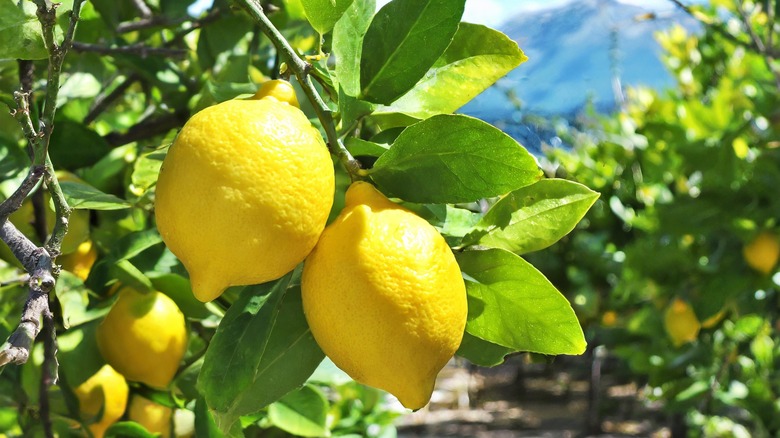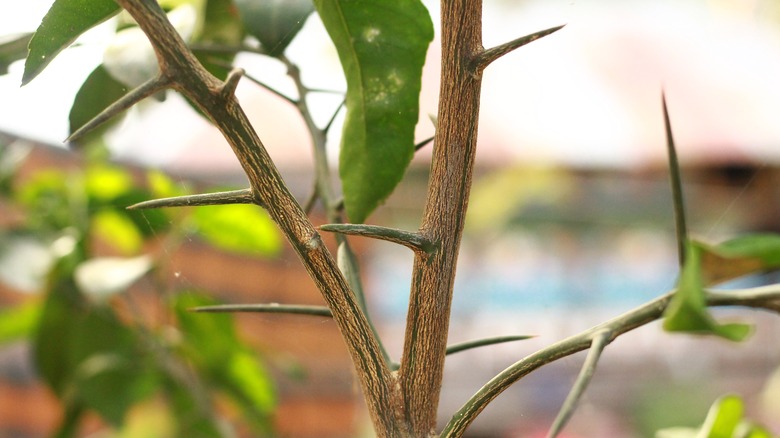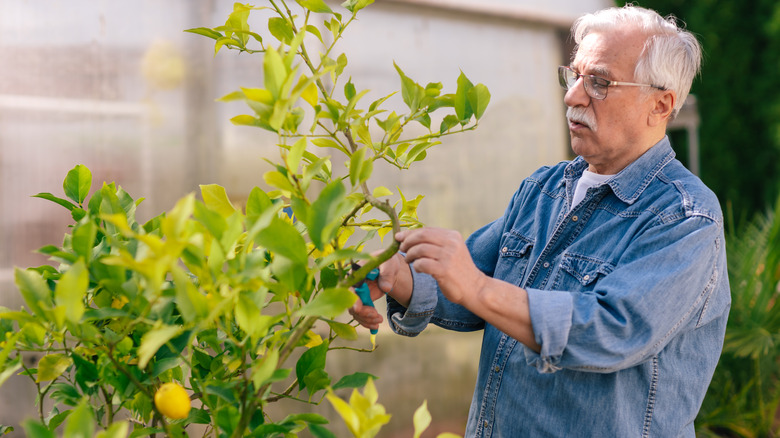Before You Plant A Lemon Tree, Be Aware Of This Prickly Downside
If you regularly use lemons for cooking or cleaning, you might consider growing your own lemon tree as a way to save money while also increasing accessibility to this citrus fruit whenever you need them. In fact, lemons are among some of the few types of citrus trees that have the ability to produce fruit throughout the year, depending on your region as well as your care for them. However, while the benefits of planting citrus fruit trees are aplenty, there are also certain downsides to consider. For many varieties of lemon tree, this includes thorns. Along with those on lime trees, these tend to be sharper compared with other types of citrus plants, such as oranges.
Many citrus fruit tree varieties have thorns, and these tend to be located along fruiting branches. The inclusion of thorns in lemon and other citrus trees is a result of an evolutionary defense mechanism against herbivore species that might feast on foliage or fruit. Nevertheless, these thorns can be problematic for home gardeners, as well as any pets or children that may come into contact with these trees.
How to plant lemon trees while managing their thorns
If you do want to plant a lemon tree despite the risk of thorns, there are a couple of ways you can manage them. First, it's important to know that there are certain lemon trees that have significantly fewer thorns. One example is the Eureka lemon tree, which is also known to produce large fruit. Another variety that generally has few to no thorns (and if it does produce thorns, they are usually soft), is the Meyer lemon tree.
While there are thornless varieties available, some people have anecdotally reported that the fruit is not as flavorful. Given this fact, another technique might be helpful to control lemon tree thorns: Simply manage sharp citrus thorns by cutting them off with pruning shears, especially if they're located along rootstock shoots that might pose dangers to pets or children. Overall, it is considered safe to prune thorns from lemon trees, including those trees grown in containers and kept partially indoors.
Other important things to consider before planting a lemon tree
Aside from their natural thorns, there are things to be aware of if you're interested in growing a lemon tree. In general, lemon trees prefer hot and moist environments, along with nitrogen-rich soil. At the same time, lemon trees, whether grown outdoors or inside of containers in a home, need to be able to drain due to a risk of disease from excess moisture.
While lemon trees tend to thrive best in subtropical and tropical climates like other types of citrus plants, you can generally still grow citrus trees indoors if you live in regions that get cold during the winter. In these cases, consider planting dwarf lemon tree varieties in containers so they can be moved inside when temperatures plunge. It's also recommended that indoor potted lemon trees get at least six hours of sunlight near a window. Even if you make sure your lemon tree gets the right amount of water and light, know that it may take up to a few years for it to produce its first fruit.
The other consideration to be aware of before planting your lemon tree is that a variety of pests are inclined to target citrus trees. These include aphids, fruit flies, and stink bugs. It's important to monitor your tree for signs of infestation or damage, especially if it's outdoors, and take action to remove any pests.


